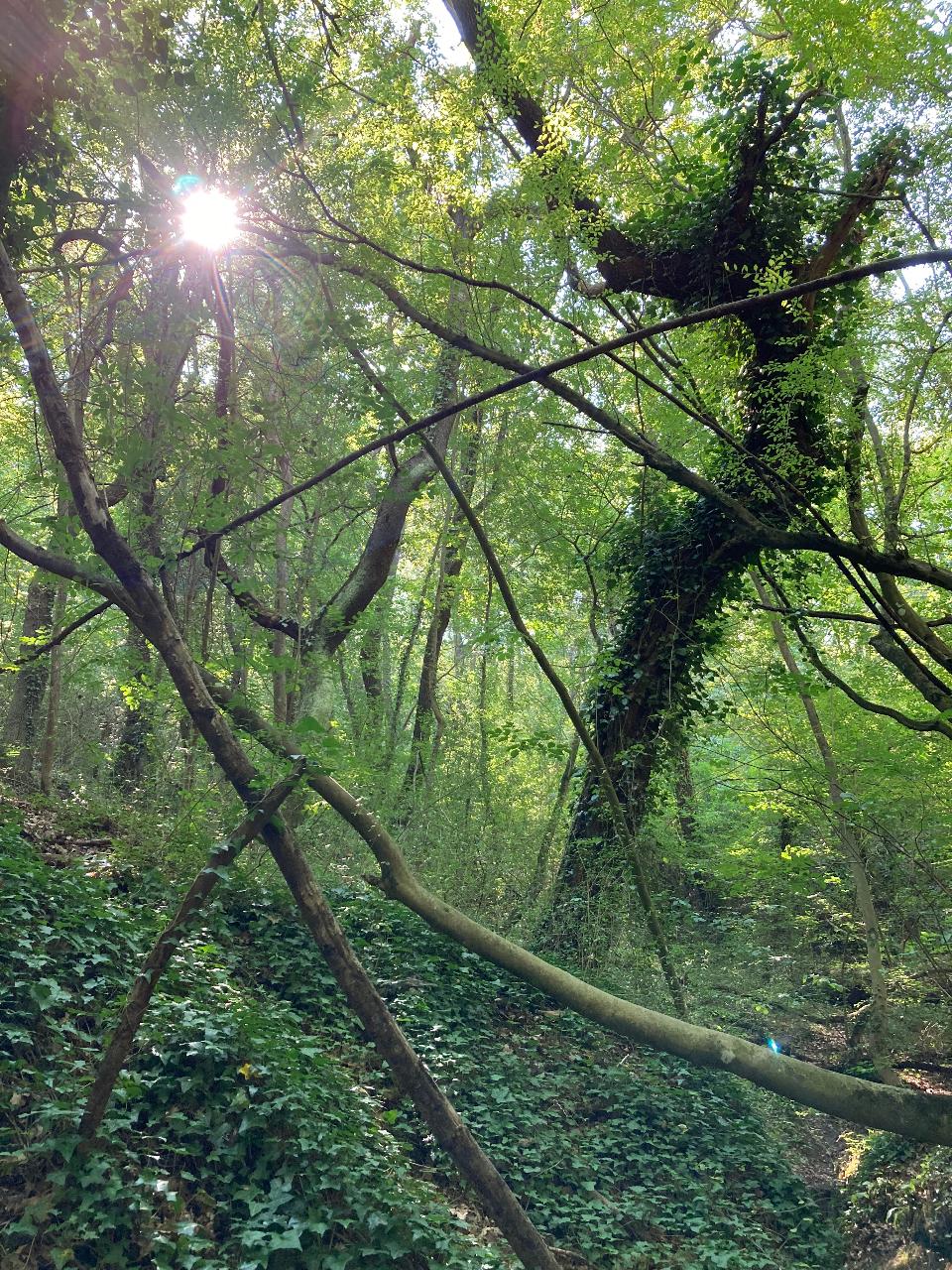MIKI YUI: LISTENING TO ECOLOGY
ZUIHITSU
QUIRKY THOUGHTS COLLECTION
Essays, personal stories and curiosities from our guest fem人le contributors
MIKI YUI: LISTENING TO ECOLOGY
Look at a tree: how the shape of the branches and leaves grow towards the sun.
Touch the texture of the bark: it tells not only about the tree itself but also about the weathering.
See how it sprouts from the soil and how it reaches out to the sky.
Shift the focus to the space around and imagine the process by which the tree came to be itself, with all the traces of time and the environment that have shaped it.
I feel at once the same wind that shaped the tree touching me.
As if feeling the tree from its inside.
The object becomes the subject.

LISTENING IS TOUCHING
Reality / Imagination
Listening to what is around me.
The work starts from listening.
Do not listen to a specific event;
try to listen to the whole, to the resonance,
to the interference between different sounds in the space.
As if in a dream.
We are hearing continuously.
Sounds from the environment gives us a map of where we are and of which kind of culture we live in.
An important factor which forms us.
We receive the vibration and it influences our thoughts and behavior.
Small sounds are taken from my surrounding, interwoven as the fragments of memories.
Played back within different surroundings, they generate own qualities each time,
and transform the environment.
Miki Yui 2000
Through the practice of field recording and contemplating sounds, I discovered “small sounds”. The subtle but vivid and tangible sounds connected me to the acoustic environment. Suddenly I felt like I was inside the sound. I learned a totally new way of listening: it was like a window opening to a whole new perspective. Through this experience I have realized that I am an inseparable part of the whole environment.
Gradually, this experience has led me to create music pieces.
My first album “small sounds” was released in 1999. This album – 16 rather short fragments of music – was made to be played quietly, randomly or in loops, so that such fragments merge and interact with the listeners’ environment. These “small sounds” act as triggers for our senses and as a bridge to another sensory experience.
In 2018 my first visit to a rainforest in the state of Amazonas affirmed this experience. Entering the forest, I felt ultimately “at home”. I felt that there was no border between inside and outside – I was breathing as the trees were breathing. The forest was full of organic life – vibrations. While being inside the forest with these loud and indefinite vibrations, suddenly, my perception expanded. I felt I was a small part of a bigger body – the earth. I acknowledged details that would have usually gone unnoticed – even the subtle movement of small insects were very vividly tangible as if they were moving inside myself. I would describe this as being in a state of resonance.
In sound, the world is a unified process, constantly transforming itself.
Resonate! a research on active listening


In 2021 I conducted a research: it was called “Resonate!” and it concerned the relationship between active listening and creative imagination. Twelve artists working in different creative fields participated: each of them did an individual active listening exercise and was then interviewed afterwards.
The exercise consisted in listening to the environment and simultaneously transmitting its vibrations through physical movement as they flowed in. Movements could be any sort of dance, singing, playing an instrument, drawing, writing or just simply moving their body.
The exercise was done by listening through headphones attached to several microphones, which intensified the acoustic perception. While listening, I recommended them to shift the focus and slowly expand the attention from the center, as if imagining circling ripples on the water surface – this is the method that Pauline Oliveros developed in her “Sonic Meditation”.
When interviewed, the participants shared their observations and their re-discovery of perception. In one of the interviews, the artist and musician Diane Barbé told me that her notion of breathing is that it connects the environment and our body: “I was moving along with the breath, so there is definitely an element of the breath that expands the reach of sounds as well as my awareness.”
The artists pointed out personal specific observations, however many of them shared similar feelings: the most common one was how the exercise helped develop an empathy with the environment.
MEMORY, IMAGINATION, EMPATHY
We live and create life through our body and the senses, not through the concept.
In our head, we tend to limit our senses in exchange to be “efficient”, which often leads to neglecting the environment that forms us.
When we listen, we simultaneously imagine and recall memories of previous experiences.
Once the active listening exercise becomes part of your physical and inner experience,
the act of listening becomes a matter that goes far beyond the ears.
By shifting the focus of our acoustic perception, we can reunite our senses. We recall memories of physical sensation which trigger our imagination – we feel empathy.
The Active Listening exercise lets us feel directly the process in the environment which we are part of – be aware of ourselves in resonance with the environment.
From a holistic point of view, there is no such duality of sending and receiving: all is resonating.
To resonate, it is key to observe the resonances and approach a unified universe.


Miki Yui was born in 1971 in Tokyo and has been based in Düsseldorf since 1994.
She is a multidisciplinary artist, composer, and musician
who crosses the boundary of music, performance, drawing, and installation. She investigates the gray zone of our perception, between the reality – imaginary. Her work has been shown worldwide.
